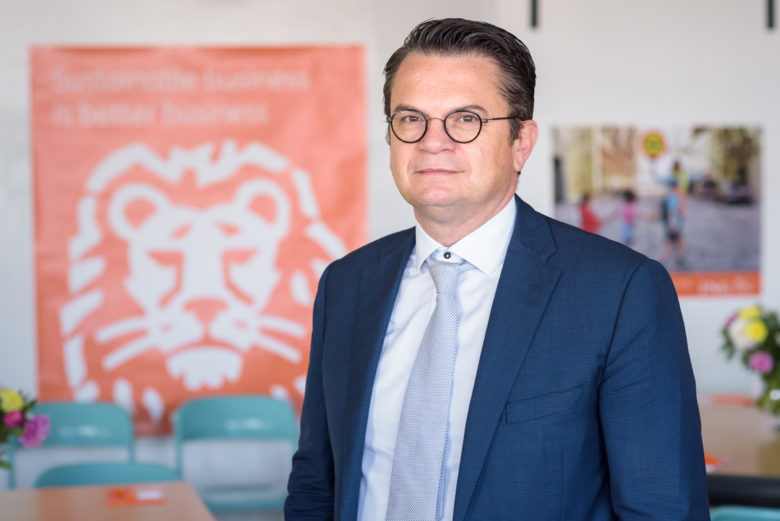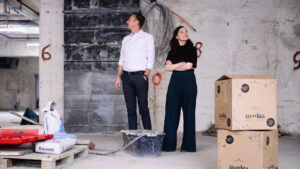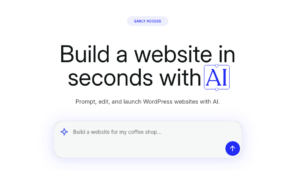Banker: We Use Technology To Assure We Invest In Environmentally Friendly Companies. This Is Not Altruism, It’s Pure Business.

Sustainability has developed to a buzzword for which, depending on the sector, there are numerous different definitions and ways to use them. There are sustainable businesses, sustainable fashion, tourism, energy, etc. There’s also sustainable financing and even sustainable corporate loans, we learned recently.
In fall, the Dutch bank ING held an event in Sofia on the matter of sustainability and Léon Wijnands, Global Head of Sustainability at the banking group, shared some thoughts on why investing in environmentally friendly is also a more profitable investment. As we wanted to explore the logic beyond the buzzwords and the PR, we tried to get more details on the idea and philosophy behind all that.
Trending Topics: Environmentally friendly, green and sustainable business is definitely trending topics right now, and many companies are trying to include that one way or another in their agendas and communication. ING has recently also held a sustainable financing conference in Sofia. Why is this a topic for you and what’s the role of a bank in the whole sustainability discourse?
Léon Wijnands: As a financial institution being sustainable is not just about stepping up on our efforts in charity, volunteering and donating. It is not even in reducing the impact of our own operations through our offices, travel, and processes.
Our biggest impact is in all the choices we make – as a lender, as an investor, and through the services, we offer our customers. This is how we can, as a bank, make a meaningful contribution to societal challenges. We want to use the core of what we do – financing, to create change. We have set goals we can align our portfolio, we have developed a methodology to get there and we use data, innovation, technology to measure where we are, but also to develop products and solutions for our clients, who ultimately are going to do that change.
Could you be more specific? Which are the areas you’ve identified as potentials and where do you want to invest?
The one theme for us is more on the social side. There is a whole area of change within the jobs market as a result of the fourth industrial revolution. Governments are more and more withdrawing themselves on the social market and leaving more to people to take care of themselves and their future. Meanwhile, we have a whole generation that due to digitalization is losing the whole notion of money. For young people, money is something, which is on your phone and has an internal source. And based on that we have identified financial health as one of the key topics. Our main activity in this domain is the Think Forward Initiative, where we’ve teamed up with academics, companies like Dell, CEPR, AWS, IBM, and Deloitte to help people make better decisions. We use behavioral science to see what drives that and what are the best ways to influence it in a positive way, we translate scientific insights into practical tools and make that available for everyone to use.
The second topic, which was also the highlight of the event in Sofia, is the climate crisis. We have translated that into climate resilience and our goal is to align our portfolio with the Paris Goals. We have been working on two things. The one topic is how can we create a financial ecosystem in which banks as much as possible commit themselves to gear their capital towards climate alignment, and as a result 35 banks signed a Collective Commitment On Climate Action. Secondly, we are working on an approach, which allows us to measure progress in that area. We have developed a data driven approach to do so, called the Terra Approach.
We are basically trying to shift our portfolio towards more sustainable businesses. If we future proof our clients, we future proof ourselves. It’s not altruism, it also makes business sense.
So, what does financing more sustainable businesses mean? Are there any particular sectors?
The first group of sectors that we have disclosed now and will start with are Power Generation, Cement, Automotive, Commercial Real estate, and Residential real estate. The other four are still coming so we are working on those and we’ll do that in the course of 2020.
What exactly do you do to assure sustainability in these sectors?
As a bank, you have more or less three directions in which you could go. One possible activity is exclusion: to stop financing particular businesses. That, however, is not our theory of change. We think that society changes because of the things we do finance and not of those we don’t finance. The whole theory of change in our approach is based on the insight that if we want to achieve the Paris goals (The Paris Agreement‘s long-term temperature goal is to keep the increase in global average temperature to well below 2 °C above pre-industrial levels – ed. note) we need a different technology tomorrow than we have today.
So, in most sectors that we have distinguished, we need to think about different technologies. It’s more about what we do finance and that’s what we call the engagement part. You want to move away from exclusion and you want to do more engagement with your clients based on those insights. For instance, in the coal industry: we don’t finance coal mining and coal projects. In power generation, we want to have a zero-coal portfolio by 2025. Because we think there are good alternatives like gas or renewables in that area to use, which are much less polluting.
You said there are three directions.
So, it’s exclusion, it’s engagement, and it’s innovation. We are developing new innovative products to drive the change. One example of innovation at our side is the sustainable improvement loans. Thanks to such products, and the decisions we’ve made in the near past on moving away from coal, our portfolio for Power Generation is clearly both below the markets CO2 emissions averages and the two degrees scenarios.
Can you explain a bit about the concept of this sustainable loan? How does it work?
Improvement loan is an example of how we use scientific insights and data to drive change. We had a PhD student undertaking research with us and he came to the insight that companies with high sustainability performance have better risk profiles. So, based on that, we decided we can give part of the risk premium back to the client. Based on that insight and on data we have, we’ve designed a product in which the interest rate of a company goes up if their environmental performance goes down. Or if the sustainability performance goes up the interest rate goes down. That way we linked for a company clearly the sustainability efforts to a lower cost of capital.
Are there any challenges in trying to convince your existing clients that this is the new way of financing, that it should work this way? What’s the response?
The real change is happening in the real economy. As a bank, we have a very important role to facilitate that. But we are not sitting in the chair of our clients. But we do take our responsibility very seriously because there is a shared interest. So, I will give you another example of how we used our Terra methodology for engagement.
For instance, if you look at the automotive industry the most important technology change is the increase of the percentage of electric and hybrid cars. So the intensity metric that we use is CO2 per km. That needs to go down. By creating a dashboard that shows where an individual company is compared to its peers in the industry we can have a strategic conversation on the change that is needed..
Realistically speaking, let’s say 2025, what’s the percentage of business of ING generated through these new types of products, the sustainable products, according to your projections, if you have such?
So, we have said 2022 targets in which we want to double our lending in that area.
Which is how much currently?
Our climate finance portfolio is 15 billion euros.
You have spoken a lot about innovation or at least mentioned it a couple of times. How do you do innovation in ING? Does it come from inside or you look for external solutions, ideas? How does it happen?
We do multiple things. We try to partner. The development of a new approach to problems is also a way of innovating. So when we were stuck in measuring we reached out to people from innovation departments. They provided us with a completely new team of people and also used an innovation methodology in order to develop the approach. You can not only use it for developing products but also to develop frameworks and measurement approaches.
An example of initiative where we also partner, is a case in which we used blockchain technology to track and trace issues in metals and mining. There we partner with another company and also with other banks to use that modern technology. So, you can see, we try to use several elements in the whole innovation space. We had another initiative in the real estate sector, where we partnered with a third party to develop an app, which helps real estate owners to check the energy efficiency of their building. The next phase of the project was to create an energy robot for us, which does the measurements not only on the technical specter but also on the real energy use and that also allows real estate owners to compare themselves to other buildings and peers if they do well or not. So, there are a lot of examples where we use innovation, whatever is available in our innovation space.
And what are your goals in Bulgaria right now with these sustainability initiatives?
The goals that we have in Bulgaria are the same goals we have set for the company. We want 100 % renewable energy for all our operations, that’s also a goal for ING in Bulgaria.
I think we need to take several steps. The first step that we are going to make is creating awareness by facilitating the dialogue not only with clients and between clients but we need to include the governments too. There are a lot of subsidiaries of multinational companies here in Bulgaria, so a lot of these companies already have strong environmental targets and they push it also to their subsidiary companies.
Also, the millennials in Bulgaria will be a strong drive for change, they are entering the job market with specific expectations from their employers. I have spoken to a lot of companies today that really see this worn talent as a very important driver and having a purpose is very important driver to attract those millennials and have them work in your company.
If we would have this conversation next year than my measure of success wouldn’t be 5 deals or 10 deals or 100 deals. The measure of success should be that we are really seeing a progress in terms of starting a conversation with our clients, clients starting to embed this in the strategy of their company, clients setting a real goals, what they want to achieve and then they will start investing in technology of tomorrow and that’s where we come in.




























